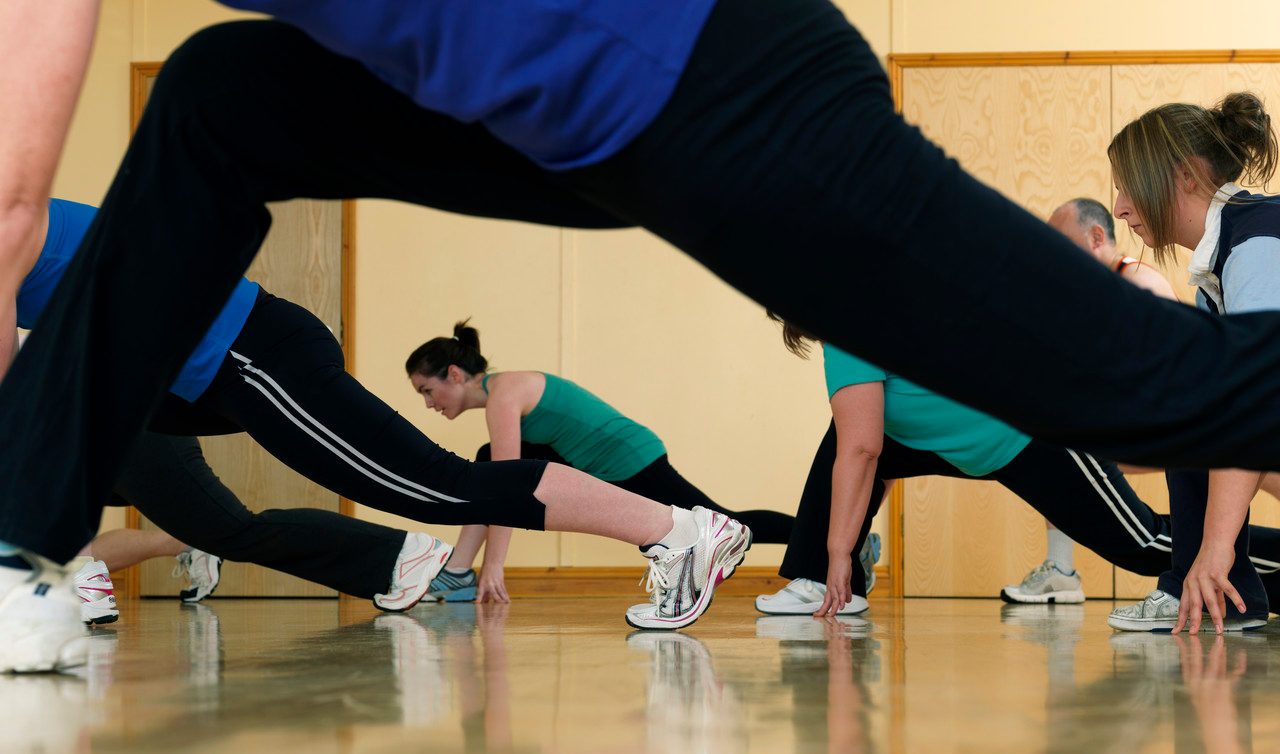Why Strength Training Will Help You Be a Better Runner

Strength training is important for everyone, but it has specific benefits for runners. Stronger leg muscles produce better performance. Here's what you can do.
Running is the go-to, all-around conditioning exercise for many people, especially in the warmer months. It’s great to go outside and get a vigorous workout that uses nothing but your body and a good pair of shoes. But as conditioned as you may feel after getting into a regular running routine, it’s still important to incorporate other types of exercise for a well-balanced fitness regimen.
If you’re a regular runner, one of the most important types of cross-training you can do to supplement your effort is strength training — and not just for your lower body.
Why is strength training important for runners?
YOU MIGHT ALSO LIKE: Strengthen Your Core to Support Your Body
Improved performance
It’s intuitive to think that to improve your running ability you need to focus on your cardiorespiratory endurance, but stronger muscles also have a positive impact on overall performance.
There are a number of reasons that greater strength results in better running. The most obvious is that stronger leg muscles produce better performance, which is especially important if you run competitively. Studies have shown that heavy resistance training that strengthens your quadriceps, glutes, and hamstrings can be beneficial for endurance runners, particularly when sprinting at the end of a race.
Strength training also improves your “running economy,” or running efficiency. According to the American College of Sports Medicine, running economy is a measure of how much oxygen a person uses to run at a particular pace — essentially, how hard it is for you to run at a specific speed.
A more economical runner uses less energy and can go farther and get there faster. It’s a similar concept to how many miles a car can go on a gallon of gas. The cars that go the farthest are the most economical.
Strength training also increases a runner’s time to exhaustion, in other words, you can run for a longer period of time and go farther before you run out of gas if strength training is a regular part of your workout routine.
Resistance training strengthens not onlymuscles but also connective tissues. All are essential components of the machine that is your body when you are running.
In addition to strong legs, runners also need a strong frame. Maintaining good posture and keeping your body and limbs relatively quiet improves your running efficiency and helps avoid injuries, so having a strong back and core are essential. Strength training also improves balance and coordination, which are important for keeping it all together as you run.
YOU MIGHT ALSO LIKE: Which Is Better: Weight Training or Cardio?
Injury prevention
Running often gets a bad rap for causing injuries — runner’s knee, iliotibial band syndrome, and tendonitis are some common examples. In fact, a majority of dedicated runners will experience an injury at some point. But strength training can minimize the risk of injuries from running in a number of ways.
Running is a chain reaction of movement, and most people have some muscles that are weaker than others. When you run, stronger muscles compensate for weaker ones, overworking them, causing imbalances in your body and making you more prone to injury. Strength training brings balance to the muscles in the chain, ensuring each muscle is carrying its share of the load.
Strength training also helps prevent injuries to the joints that take a beating when you run, strengthening the stabilizing muscles that surround them. This is especially true for knees, which are notorious for running injuries.
A further benefit of resistance training is performing the full range of motion in joints and muscles, which increases flexibility. If you have restricted movement in your ankle, for example, your knee and hips will overcompensate, making them more prone to injury.
Finally, strength training also helps grease the skids of neuromuscular pathways making sure your brain and muscles are communicating effectively and muscles are responding efficiently. Efficient communication between brain and body gives runners better control and stability, leading to fewer injuries.
If you’re one of the many runners who has already been injured, performing a strength training routine will help you recover faster and address the weakness that caused your injury in the first place.
How to strengthen your legs
Start with lunges, squats, and deadlifts. These exercises not only build strength but also mimic many of the movements executed when you run, also strengthening the neuromuscular connection.
A few repetitions of extremely heavy weightlifting can increase your strength without building bulk, which tends to slow runners down.
Research shows that “explosive” movement, or plyometrics, improves running performance. Examples of plyometrics include sprinting and exercises that involve jumping.
The important thing is to find a routine that works for you. If you are new to running, incorporate just 10 to 20 minutes of strength training 2 or 3 days a week when you start your program. Make sure the workout comes after you run, not before.
Be sure to include exercises that strengthen your core as well as your back, shoulders, and arms. Strengthening your whole body, not just your legs, will help ensure your body is tight, your movements are efficient, and will cushion and protect your back and neck.
If you’re a runner, adding strength training to your routine can enhance your performance and protect you from injury. You won’t need to spend a lot of time training before you start to notice the many benefits of a more well-rounded exercise routine.
YOU MIGHT ALSO LIKE: Exercise Can Strengthen Bones and Prevent Osteoporosis
Updated:
January 19, 2023
Reviewed By:
Janet O’Dell, RN